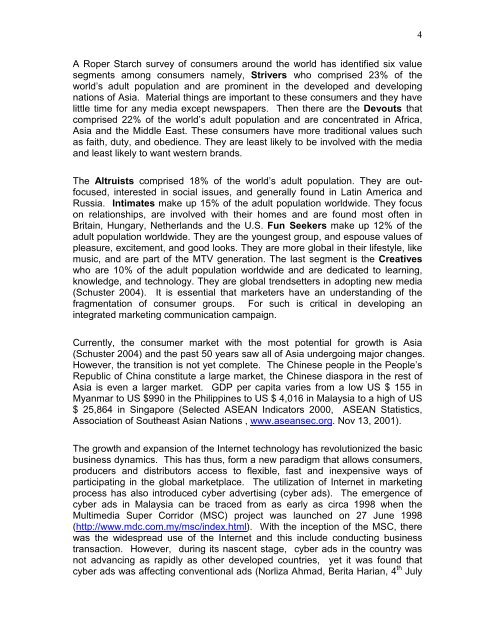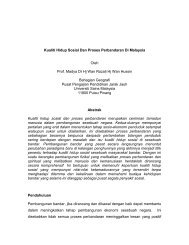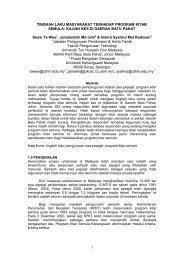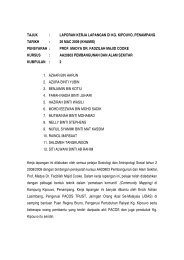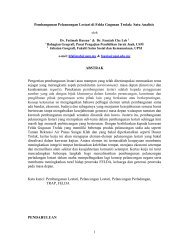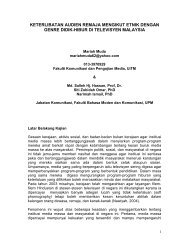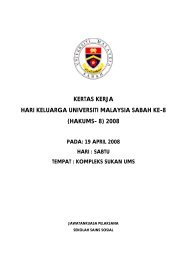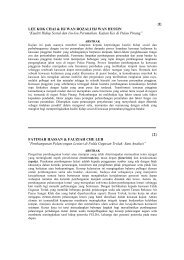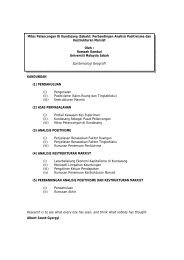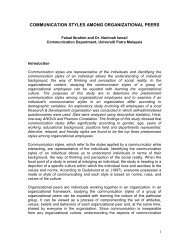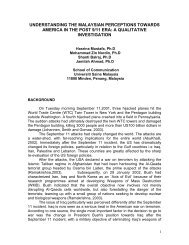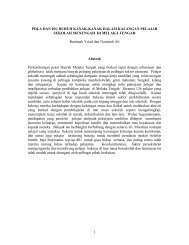FACTORS AFFECTING ONLINE PURCHASING BEHAVIOR
FACTORS AFFECTING ONLINE PURCHASING BEHAVIOR
FACTORS AFFECTING ONLINE PURCHASING BEHAVIOR
You also want an ePaper? Increase the reach of your titles
YUMPU automatically turns print PDFs into web optimized ePapers that Google loves.
4A Roper Starch survey of consumers around the world has identified six valuesegments among consumers namely, Strivers who comprised 23% of theworld’s adult population and are prominent in the developed and developingnations of Asia. Material things are important to these consumers and they havelittle time for any media except newspapers. Then there are the Devouts thatcomprised 22% of the world’s adult population and are concentrated in Africa,Asia and the Middle East. These consumers have more traditional values suchas faith, duty, and obedience. They are least likely to be involved with the mediaand least likely to want western brands.The Altruists comprised 18% of the world’s adult population. They are outfocused,interested in social issues, and generally found in Latin America andRussia. Intimates make up 15% of the adult population worldwide. They focuson relationships, are involved with their homes and are found most often inBritain, Hungary, Netherlands and the U.S. Fun Seekers make up 12% of theadult population worldwide. They are the youngest group, and espouse values ofpleasure, excitement, and good looks. They are more global in their lifestyle, likemusic, and are part of the MTV generation. The last segment is the Creativeswho are 10% of the adult population worldwide and are dedicated to learning,knowledge, and technology. They are global trendsetters in adopting new media(Schuster 2004). It is essential that marketers have an understanding of thefragmentation of consumer groups. For such is critical in developing anintegrated marketing communication campaign.Currently, the consumer market with the most potential for growth is Asia(Schuster 2004) and the past 50 years saw all of Asia undergoing major changes.However, the transition is not yet complete. The Chinese people in the People’sRepublic of China constitute a large market, the Chinese diaspora in the rest ofAsia is even a larger market. GDP per capita varies from a low US $ 155 inMyanmar to US $990 in the Philippines to US $ 4,016 in Malaysia to a high of US$ 25,864 in Singapore (Selected ASEAN Indicators 2000, ASEAN Statistics,Association of Southeast Asian Nations , www.aseansec.org. Nov 13, 2001).The growth and expansion of the Internet technology has revolutionized the basicbusiness dynamics. This has thus, form a new paradigm that allows consumers,producers and distributors access to flexible, fast and inexpensive ways ofparticipating in the global marketplace. The utilization of Internet in marketingprocess has also introduced cyber advertising (cyber ads). The emergence ofcyber ads in Malaysia can be traced from as early as circa 1998 when theMultimedia Super Corridor (MSC) project was launched on 27 June 1998(http://www.mdc.com.my/msc/index.html). With the inception of the MSC, therewas the widespread use of the Internet and this include conducting businesstransaction. However, during its nascent stage, cyber ads in the country wasnot advancing as rapidly as other developed countries, yet it was found thatcyber ads was affecting conventional ads (Norliza Ahmad, Berita Harian, 4 th July


